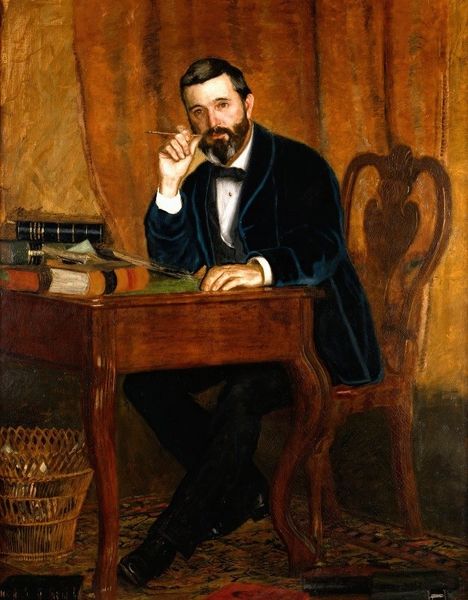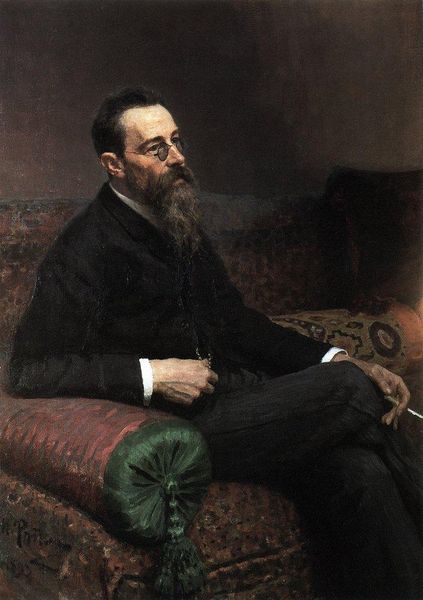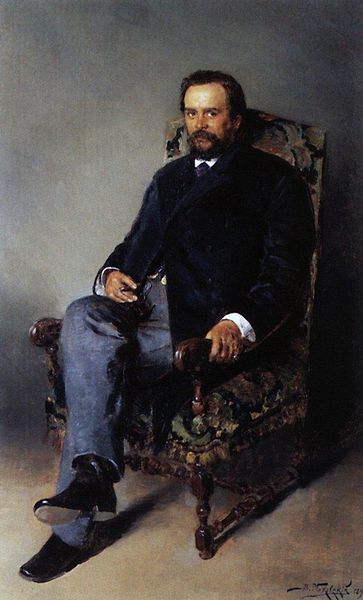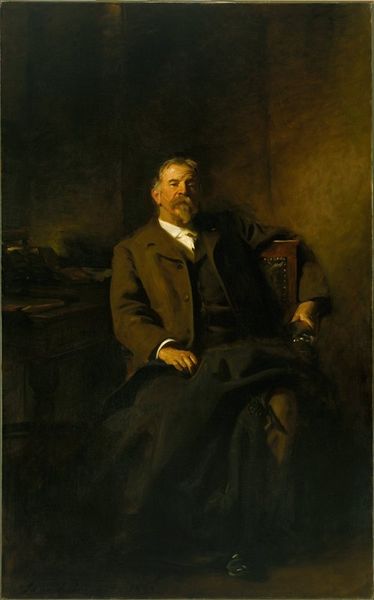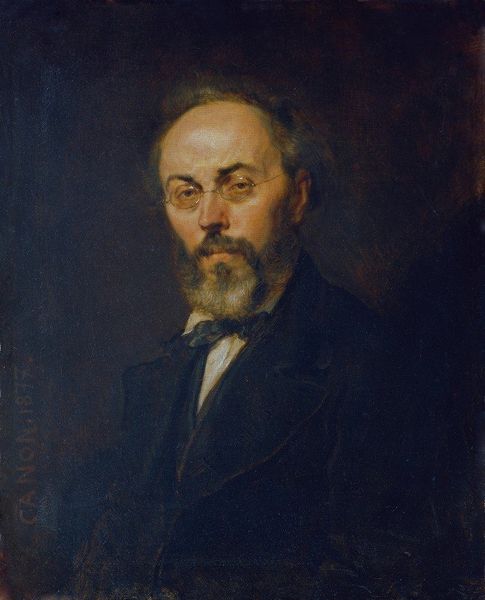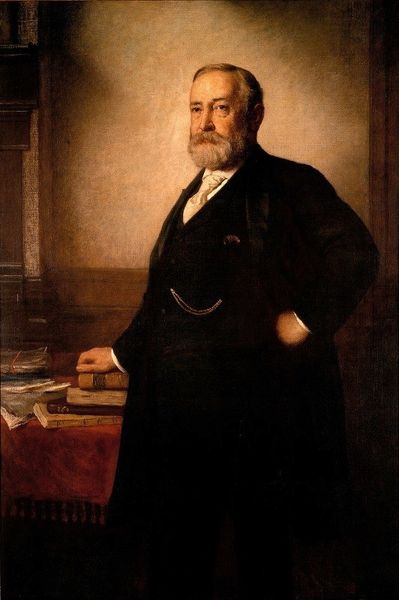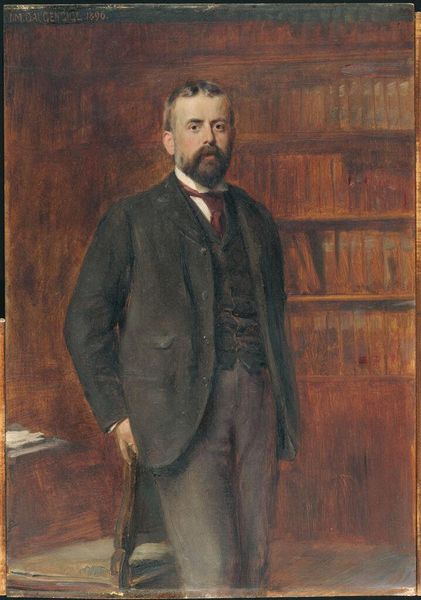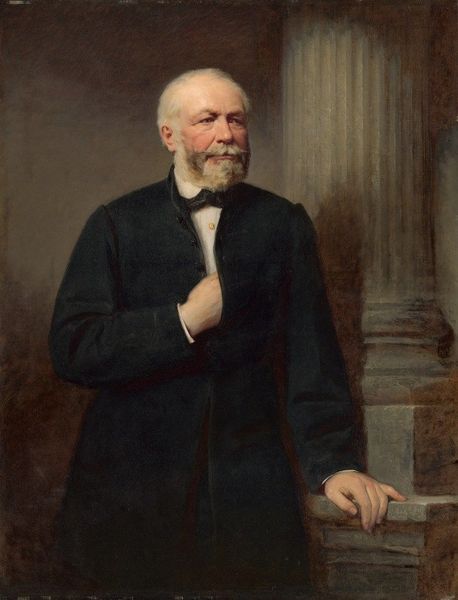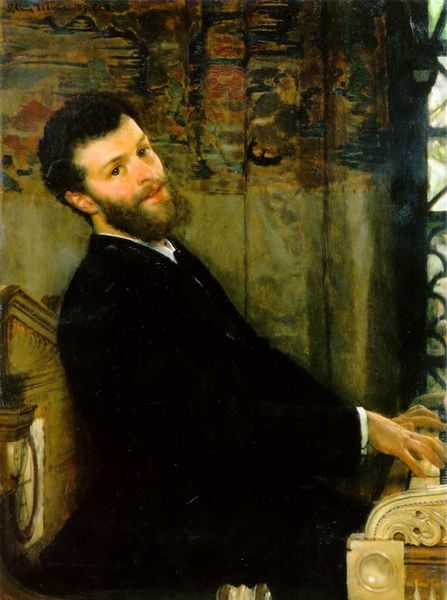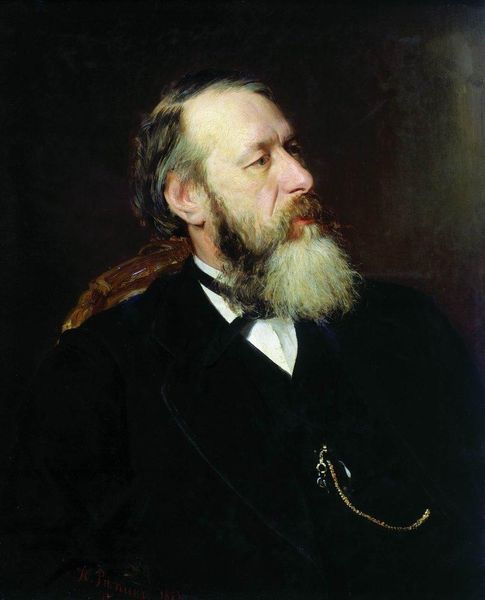
painting, oil-paint
#
portrait
#
painting
#
impressionism
#
oil-paint
#
genre-painting
#
academic-art
#
modernism
#
realism
Copyright: Public domain
Editor: This is Thomas Eakins' 1876 oil painting, "Dr. John H. Brinton." It has a rather somber mood to it, with the dark clothing and serious expression of the doctor. What historical insights can you share about this piece? Curator: Well, portraits are never just portraits, are they? Eakins’ painting emerges during a period of professionalization within American medicine. Brinton, a prominent surgeon, is staged within the visual language of intellectual authority – books, desk, portrait behind him - signaling status and a certain…clinical detachment. Editor: Detachment? Curator: Consider the context. Brinton was known for his Civil War service. In post-war America, representing surgical prowess had political weight. Think about it: Who gets memorialized, and how, says much about shifting power dynamics. How might the painting’s reception differ then, versus now? Editor: It’s interesting to think about how medical authority was being presented and solidified during this time through portraits like these, and how perceptions change as social values evolve. Curator: Exactly. Eakins’ portrait reflects Brinton's position but also helps *construct* that position within a specific historical and social landscape. Seeing art as an agent shaping perceptions rather than just a mirror is key. Editor: I’m walking away thinking about how much the socio-political context shapes what we see and what we’re meant to see. It definitely prompts further inquiry. Curator: Indeed. Let's delve into another work and continue questioning those embedded meanings.
Comments
No comments
Be the first to comment and join the conversation on the ultimate creative platform.
